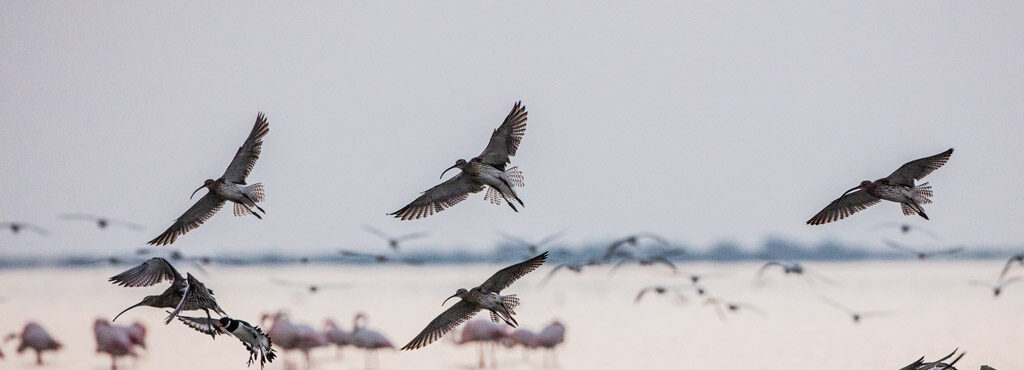
Water sector thirsty for change at Climate COP
Water must be at the core of effective climate action, but many countries are unaware of the powerful water-related solutions that exist. To remedy this, the global water community will be speaking with one voice at the upcoming UNFCCC COP 26 Climate Change Conference in November and host a joint Water Pavilion.
The Water Pavilion is the result of an unprecedented collaboration among over 30 organisations, governments and companies in the water space. The aim is to deliver cutting edge, science-based advice to climate decision makers. Countries can also learn more about the central role that water plays in the climate crisis and the need for water to be at the very centre of climate solutions for mitigation and adaptation.
Torgny Holmgren, Executive Director of the Stockholm International Water Institute (SIWI), which leads the Water Pavilion explains,
“The climate crisis is primarily a water crisis. To a large extent, we experience global warming in the form of too much or too little water, as floods or droughts. But few countries are aware of how much they can gain from focusing more on water in their climate action, and that is what we want to change with the first-ever Water Pavilion.”
The idea of the Water Pavilion at COP 26 was born after COP 25, when the climate debate was starting to shift direction and increasingly focus on water, landscapes and systems in addition to technical solutions. To seize this opportunity, SIWI has been collaborating closely with the Alliance for Global Water Adaptation (AGWA), CDP, Global Water Partnership (GWP), and the International Union for Conservation of Nature (IUCN) to ensure that water is prominent at COP 26.
The pavilion will have two interfaces. It will be physically present in the Blue Zone of the COP 26 venue in Glasgow as a convening space for government representatives, observer organisations and the media attending the COP. At the same time, all events in the Pavilion will be live streamed, allowing people all over the world to virtually engage with the broadcast events. This hybrid approach means that event organisers, speakers and participants who are not present at the COP are included, making the programme more diverse than ever.
Nigel Topping, the UK High Level Champion for Climate Action at COP 26 says,
“The Water Pavilion is an innovative and radically inclusive space for bringing governments and non-state actors together, and as a hybrid pavilion, it makes this climate conference accessible to the global audience. I applaud this initiative’s contribution to raising the inclusion ambition of this COP.”
Jane Madgwick, CEO of Wetlands International, said:
“Water is not just a victim of the climate crisis, it is central to solving climate change. But, for water to be figured into any calculus regarding building resilience and securing the livelihoods of billions of people across the globe, we need to make sure that water-bound ecosystems are part of the equation. Wetlands, while rich in biodiversity, are also demonstrably the best carbon sinks and regulators of water. Wetlands save lives by mitigating the impacts of sea-level rise, the worst effects of droughts and climate change-exacerbated storms. To seriously secure water and wetlands we need to see a globally unified approach which shares knowledge and resources and connects investments towards building resiliency across landscapes, rather than being constantly on the back foot; scrambling to fix threats to water on case-by-cases basis. We need a virtuous cycle which understands that our health — economic and physical — relies on the health of water and wetlands and that if we act now, together, and protect our water ecosystems, they will protect us.”
Follow the Water Pavilion’s events online at: waterforclimate.net.
Media Contact:
Arin de Hoog
[email protected]
Water Pavilion Core Partners
Alliance for Global Water Adaptation (AGWA); Arup; German Federal Ministry for Economic Cooperation and Development (BMZ); CDP; CGIAR Research Program on Climate Change, Agriculture and Food Security (CCAFS); Diageo; The Foreign Commonwealth & Development Office of the United Kingdom (FCDO); Deutsche Gesellschaft für Internationale Zusammenarbeit (GIZ); Global Center on Adaptation (GCA); Government of the Netherlands Ministry of Infrastructure and Water Management; Global Water Partnership (GWP); International Union for Conservation of Nature (IUCN); International Water Management Institute (IWMI); International Water Resources Association (IWRA); Ooska News; Republic of Tajikistan Ministry of Energy and Water Resources; Sanitation and Water for All (SWA); Stockholm International Water Institute (SIWI); Scottish Government; The Nature Conservancy (TNC); The Resilience Shift; UN-Habitat Global Water Operators’ Partnerships Alliance (GWOPA); United Nations Office for Disaster Risk Reduction (UNDRR); United Nations Economic Commission for Europe (UNECE); UNESCO Intergovernmental Hydrological Programme (IHP); UNICEF; UN Global Compact CEO Water Mandate in co-secretariat with Pacific Institute; Water UK; Water.org; WaterAid; Wetlands International; World Bank Group – Global Water Security & Sanitation Partnership (GWSP); World Meteorological Organization (WMO); World Wide Fund for Nature (WWF).
